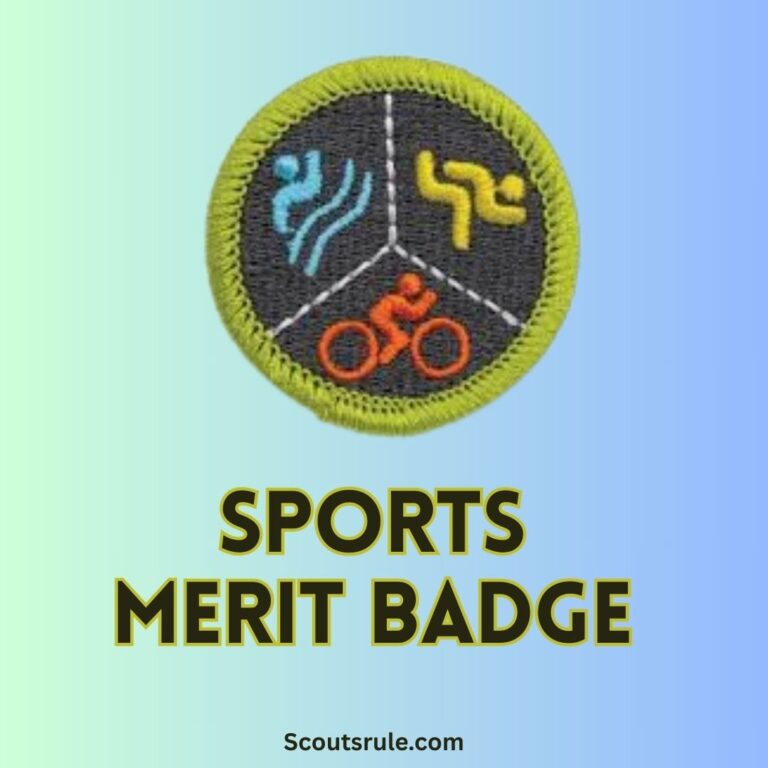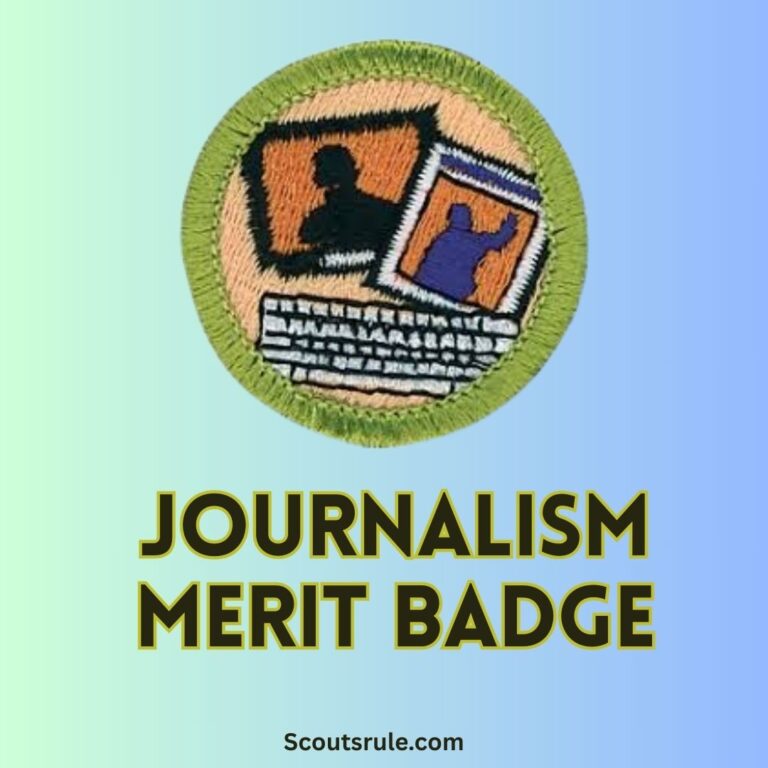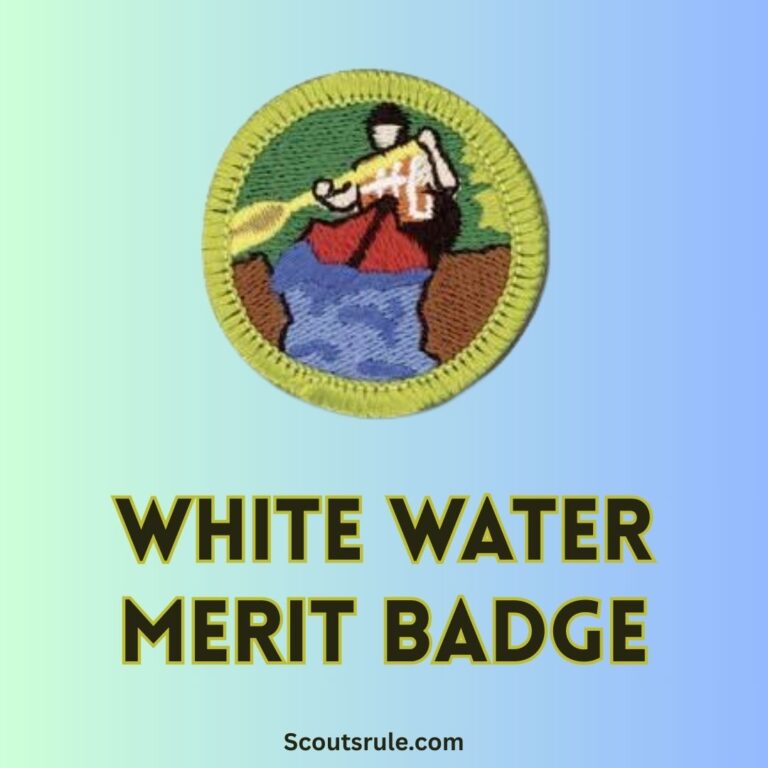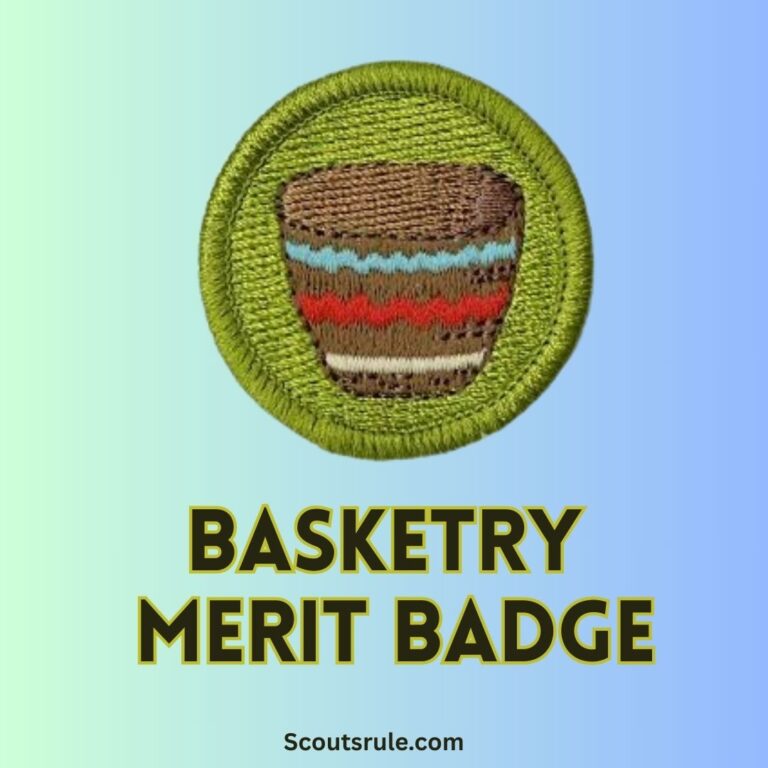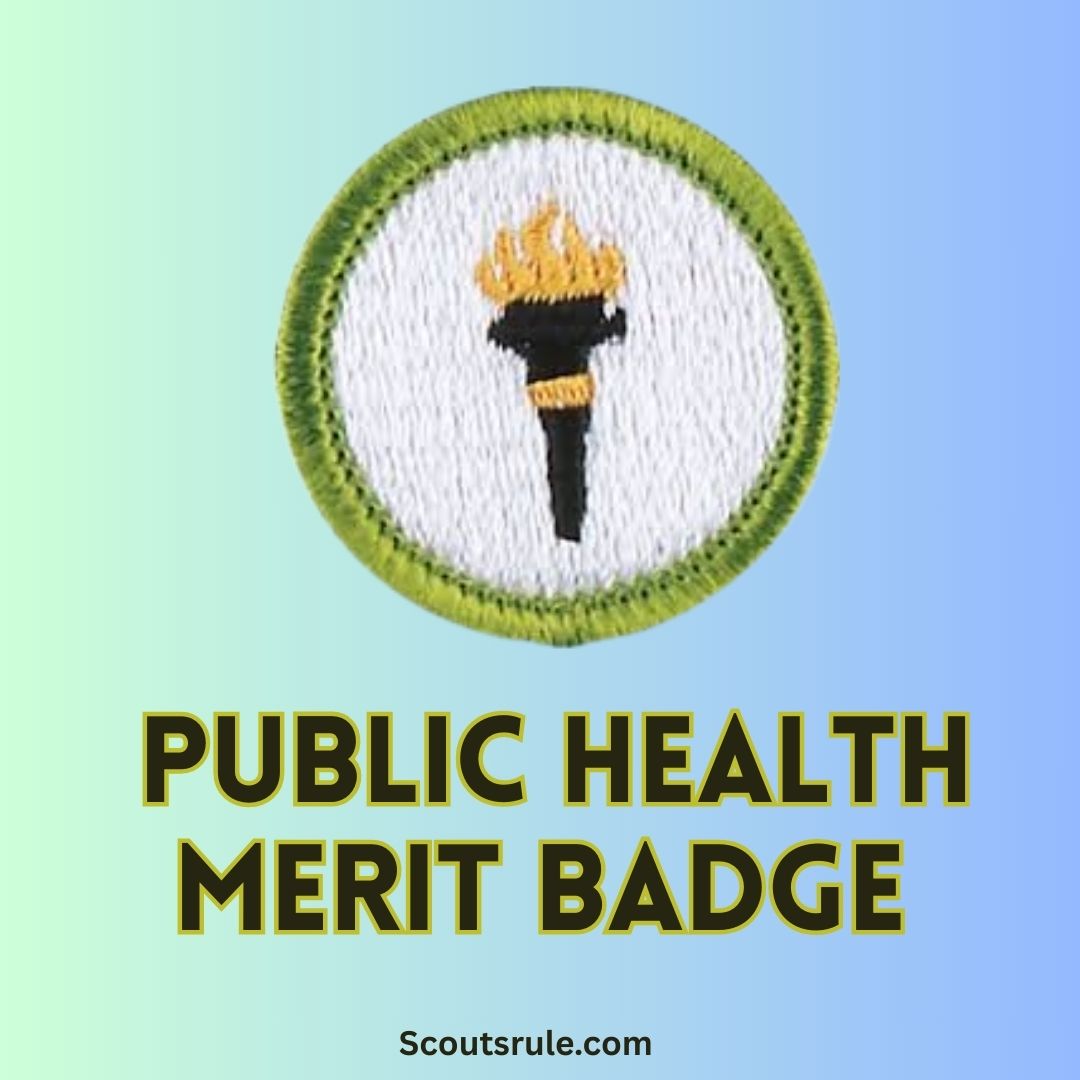
This guide is designed to help Scouts develop a broad understanding of public health—from the science of disease transmission and prevention to immunization, environmental hazards, and the structures that protect community health. Whether you aim to learn about how diseases spread, how public policies protect society, or how local agencies operate to keep communities healthy, this guide will walk you through each requirement with practical tips, project ideas, and insights into the value of public health in everyday life.
Post Contents
- Introduction: Why Public Health Matters
- 2. Objectives and Significance of the Public Health Merit Badge
- 3. Overview of the Requirements
- 4. Understanding Public Health and Its Impact
- 5. Disease Transmission, Prevention, and Control
- 6. Immunization: The Role of Vaccines
- 7. Safe Drinking Water and Sanitation Practices
- 8. Vectors in Public Health: Controlling Insects and Rodents
- 9. Field Experiences: Visiting Public Health Facilities
- 10. Environmental and Lifestyle Impacts on Public Health
- Conclusion: Building a Healthier Community
Introduction: Why Public Health Matters
Imagine a world where communities thrive because diseases are quickly identified, prevented, and controlled. Public health is the collective effort to protect and improve the health of people and communities. It covers everything from ensuring that water is safe to drink to preventing the spread of contagious diseases. The Public Health Merit Badge provides Scouts with a comprehensive understanding of these crucial aspects. Whether you learn about disease transmission in a classroom or see first-hand how local agencies operate, you will come away with valuable knowledge about how public health efforts can save lives and enhance quality of life.
Public health is essential not just during crises like pandemics, but in everyday actions—such as the proper disposal of waste, immunizing children, and controlling environmental hazards. These efforts contribute to the overall well-being of society and reflect the Scouting values of service, preparedness, and community involvement.
2. Objectives and Significance of the Public Health Merit Badge
The Public Health Merit Badge is designed to achieve the following objectives:
- Educational Growth: By learning core public health principles and terminology, you gain a solid foundation to critically analyze how diseases spread, how outbreaks are managed, and how health policies are developed.
- Awareness and Preparedness: The badge trains you to identify common health hazards, understand the importance of immunizations, and learn how access to clean water and sanitation directly affects community health.
- Practical Application: You will explore how public health measures are implemented—whether by local waste management agencies, food service facilities, or through community immunization programs.
- Community Engagement: Understanding public health leads to civic responsibility. By participating in tasks that involve researching local agencies or visiting public health facilities, you learn how to contribute to safer, healthier environments.
- Career Exploration: This badge offers a glimpse into various career paths in public and environmental health, thereby linking your learning to future opportunities in science, government, or non-profit work.
These objectives work together to create a well-rounded educational experience that prepares you not only to follow health guidelines but also to become an active participant in promoting community wellness.
3. Overview of the Requirements
The Public Health Merit Badge has a multi-faceted set of requirements, each intended to broaden your understanding and hands-on expertise in this vital field. While specific guidelines may be updated periodically, the badge generally requires you to:
- Explain what public health is.
- Discuss how various diseases—including Escherichia coli (E. coli), tetanus, AIDS, encephalitis, salmonellosis, Lyme disease, and coronavirus (COVID-19)—are contracted and potentially prevented.
- Pick four additional diseases from a provided list (such as gonorrhea, West Nile virus, botulism, influenza, syphilis, hepatitis, emphysema, meningitis, herpes, lead poisoning) and describe their transmission, prevention, and treatment.
- Define immunization, list eight diseases for which children should be immunized, indicate two diseases requiring periodic reimmunization, and identify one immunization that everyone should receive annually.
- Demonstrate methods to make water safe for drinking while at camp and explain proper practices for washing and drying utensils both at home and in camp.
- Define what a vector is, describe how insects and rodents can be controlled in different environments (home, community, and camp), and discuss which vectors are easier to manage individually versus those requiring broader collective action.
- Complete at least one field experience—visiting a municipal wastewater treatment facility, a solid-waste management operation, or a food service facility—to learn about safe waste disposal or food handling.
- Discuss environmental hazards, such as air and water pollution, and the health dangers from using tobacco and drugs.
- Explore local public health agencies through visits or online research, comparing leading causes of death and disease, and discuss efforts to reduce these morbidity and mortality rates.
Throughout these requirements, you will be encouraged to research, document, and then discuss your findings with your merit badge counselor.
4. Understanding Public Health and Its Impact
4.1 Defining Public Health
Public health is defined as the science and art of preventing disease, prolonging life, and promoting physical health through organized efforts and informed choices of society, public and private organizations, communities, and individuals. It covers a wide range of practices and policies that aim to protect the health of the public from risks associated with diseases and harmful environments.
An integral part of public health is health education, which ensures that communities understand and adopt practices that reduce the spread of infections, improve sanitation, and promote overall wellness. In this context, you will learn to differentiate between personal hygiene and public health measures that require community-wide cooperation.
4.2 Public Health in Historical Context
Public health is a relatively modern discipline in its organized form, but its principles have existed for centuries. Historical landmarks include:
- Urban Sanitation Efforts: In the 19th century, improvements in sewage systems and clean water supplies dramatically reduced the incidence of diseases such as cholera and typhoid in burgeoning cities.
- Vaccination Programs: Campaigns to immunize against diseases like smallpox and polio have saved millions of lives and reshaped modern society.
- Pandemic Responses: Recent events, such as the COVID-19 pandemic, have underscored public health’s critical role in coordinating resources, informing the public, and implementing measures to reduce transmission rates.
Understanding this evolution helps clarify why public health is essential in today’s society—a blend of scientific research, policy development, and community action that continuously adapts to emerging global challenges.
5. Disease Transmission, Prevention, and Control
A major focus of your studies will be on understanding how diseases are transmitted and what can be done to control their spread.
5.1 How Diseases Are Contracted and Prevented
Diseases can be transmitted in various ways, including:
- Direct Contact: Physical interaction with an infected person can spread diseases like gonorrhea or influenza.
- Indirect Contact: Touching contaminated surfaces can lead to infection. For example, E. coli bacteria can be contracted through improperly washed fruits and vegetables.
- Airborne Transmission: Diseases such as influenza and tuberculosis may spread via airborne particles.
- Vector-Borne Transmission: Insects, such as mosquitoes and ticks, can carry diseases like West Nile virus and Lyme disease.
- Contaminated Water or Food: Salmonellosis and botulism are often linked to improperly stored or prepared food and unsafe water supplies.
- Toxin Exposure: Some hazards, like lead poisoning or tetanus, occur due to exposure to environmental toxins or through wounds contaminated with bacterial spores.
Preventive measures—such as vaccination, handwashing, protective equipment, and safe food storage—play a central role in mitigating these risks.
5.2 Focus on Specific Diseases
According to the badge requirements, you need to explain how certain diseases are contracted and prevented. For instance:
- Escherichia coli (E. coli): Typically contracted through contaminated food or water; prevention includes proper food handling and sanitation.
- Tetanus: Contracted through contaminated wounds; prevented by immunization and proper wound care.
- AIDS: Transmitted through bodily fluids; emphasis is on safe practices and awareness.
- Encephalitis: Often spread by mosquito bites; preventive measures include repellents and removing standing water.
- Salmonellosis: Contracted from bacteria in improperly handled food; prevention involves cooking food thoroughly.
- Lyme Disease: Transmitted by ticks; prevention involves using insect repellent and checking for ticks after outdoor activities.
- Coronavirus (COVID-19): Spread primarily through respiratory droplets; prevention includes vaccination, mask-wearing, and social distancing.
For your project, you might also choose additional diseases such as gonorrhea, West Nile virus, botulism, influenza, hepatitis, or meningitis. For each, describe:
- The disease type (viral, bacterial, toxin-induced, etc.)
- Vectors or means of transmission
- Preventive measures (such as hygiene practices, vaccinations, or lifestyle changes)
- Available treatments
Discussing these diseases will help you understand the importance of public health measures in safeguarding communities from infectious diseases.
6. Immunization: The Role of Vaccines
Immunization is a cornerstone of preventive public health.
6.1 What Is Immunization?
Immunization is the process of making a person immune or resistant to an infectious disease, typically by administering a vaccine. Vaccines stimulate the immune system, training it to recognize and combat pathogens without causing the disease itself.
6.2 Immunization Schedules
According to the requirements, you need to:
- List Eight Diseases for which young children should be immunized: Common immunizations for children include those against measles, mumps, rubella, chickenpox, polio, diphtheria, pertussis, and hepatitis B.
- Identify Two Diseases for which reimmunization is recommended periodically for all: Tetanus and influenza are often recommended for reimmunization due to the waning effectiveness of the vaccine over time.
- One Immunization Everyone Should Receive Annually: Seasonal influenza vaccines are recommended yearly to adapt to changes in the circulating virus strains.
6.3 Diseases without Immunizations
Discuss those diseases that do not currently have an available vaccine, and why immunization in these cases might rely on other preventive strategies such as improved sanitation and vector control.
Understanding immunization details not only improves personal health but also protects the community through herd immunity—a critical concept in public health.
7. Safe Drinking Water and Sanitation Practices
Access to safe drinking water and maintaining proper sanitation are fundamental to preventing disease.
7.1 Making Water Safe to Drink
At camp or in areas with untrusted water sources, two methods to make water safe include:
- Boiling Water: Boiling is a simple yet effective method for killing pathogens. Bring the water to a rolling boil for at least one minute.
- Chemical Treatment: Water purification tablets or a small amount of chlorine can disinfect water, though they may affect taste and clarity.
Demonstrate these methods as part of your project and explain the science behind how heat or chemicals kill harmful microorganisms.
7.2 Dish and Utensil Hygiene
Effective water and dish hygiene are also critical:
- Washing Procedures: Use hot, soapy water to scrub dishes and utensils. Rinse with clean water and, if possible, use sanitizing methods (such as letting dishes air-dry on a clean rack).
- Keeping Equipment Clean: Explain how proper sanitation practices help prevent the spread of diseases, particularly in communal living spaces like camps.
Discussing these practices illustrates the link between simple daily actions and broader public health outcomes.
8. Vectors in Public Health: Controlling Insects and Rodents
Vectors are living organisms that transmit infectious diseases between humans or from animals to humans.
8.1 Defining a Vector
A vector is any agent—commonly an insect or rodent—that carries and transmits an infectious pathogen into another living organism. For example, mosquitoes are vectors for West Nile virus, and rodents can spread diseases like leptospirosis.
8.2 Individual Versus Collective Control Measures
Explain that:
- Individual Actions: Personal measures like using insect repellent, installing window screens, and properly storing food can reduce exposure to vectors.
- Collective Actions: Larger scale measures, such as community-wide pest control programs and improvements in sanitation infrastructure, require coordinated efforts from public health agencies and local governments.
Understanding which vectors can be managed individually and which require collective action is fundamental to effective disease prevention strategies.
9. Field Experiences: Visiting Public Health Facilities
Many of the badge requirements involve direct interaction with public health facilities or agencies.
9.1 Visiting a Waste or Food Service Facility
For example, with parental and counselor approval, you may choose to:
- Visit a Municipal Wastewater Treatment Facility: Observe the processes used to treat and safely dispose of sewage. Note how these practices prevent waterborne diseases.
- Visit a Food Service Facility: Observe how restaurants or school cafeterias handle and store food, check temperatures, and prevent microbial growth.
During such visits, engage in discussions with facility managers about their procedures and challenges, and then report your findings to your counselor.
9.2 Exploring Public Health Agencies
Alternatively, you may:
- Visit or Explore a Public Health Agency Website: Compare the four leading causes of mortality and morbidity in your community with national trends. Discuss public initiatives designed to reduce these statistics.
- Document Strategies: Explain how local health agencies plan to reduce disease outbreaks through education, vaccination programs, and preventative controls.
Field experiences augment theoretical knowledge with practical, real-world insights—a core strength of the Public Health Merit Badge.
10. Environmental and Lifestyle Impacts on Public Health
Public health does not exist in isolation—it is deeply intertwined with our environment and our lifestyle choices.
10.1 Pollution and Health
Discuss how:
- Air, Water, and Noise Pollution: Can lead to chronic health conditions such as asthma, cardiovascular disease, and other respiratory conditions.
- Waste and Toxin Exposure: Inadequate waste management can lead to contamination of water supplies or soil, increasing the risk of infections and toxic exposures.
10.2 The Impact of Tobacco, Alcohol, and Drug Abuse
Public health also examines behavior:
- Tobacco Use: Causes significant respiratory and cardiovascular issues.
- Alcohol and Drug Abuse: Contributes to a range of health problems including liver disease, neurological issues, and mental health challenges.
- Education and Prevention: Effective public health campaigns that educate citizens on the dangers of substance abuse have a direct effect on community wellness.
Detailing these topics in discussions with your counselor reinforces how public health initiatives aim to curb preventable diseases and promote healthier lifestyles.
Conclusion: Building a Healthier Community
The Public Health Merit Badge is more than an academic exercise; it is an exploration into the systems and practices that keep communities safe. By studying how diseases are transmitted, understanding the importance of immunization and safe water practices, and learning how environmental factors and personal behaviors contribute to public health, you are equipped with knowledge that is both powerful and practical.
Throughout this journey, you discover that the actions of individuals, when coupled with supportive community and government policies, have a profound impact on public health outcomes. The badge teaches you to think critically about which health interventions are most effective, why collective action is sometimes essential, and how you can contribute to making your community a safer place.
As you reflect on your experiences—from visiting local facilities and engaging with public health agencies, to learning about the challenges of controlling disease vectors and tackling environmental hazards—remember that every effort you make to improve public health benefits not only you but everyone around you. In a world where global health challenges continue to arise, the skills you gain through this badge will empower you to be part of the solution.
May your pursuit of public health knowledge inspire you to adopt responsible, health-conscious practices and become a proactive advocate for community well-being. Whether you decide to pursue further education or simply integrate these principles into your daily life, your commitment to public health is a vital step toward ensuring a healthier, happier future for all.

Hi, Robin here, A former lead Scout and here I share my inspiring stories about USA Scouts, leadership, adventure, how to guides and more.


